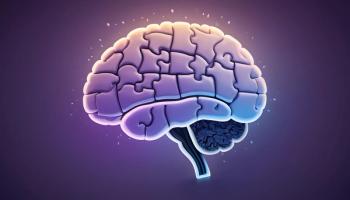
Risk Factors for Catatonia Relapse in Psychotic and Affective Disorders
Key Takeaways
- Catatonia relapse is common, with nearly half of patients experiencing it, especially within two years post-initial episode.
- Positive lorazepam response and benzodiazepine use at discharge increase catatonia relapse risk, while antipsychotics reduce it.
Nearly half of catatonia patients relapse within two years, highlighting the need for effective long-term management strategies and potential benefits of antipsychotics.
CASE VIGNETTE
“Ms Sarah” is a 40-year-old Caucasian female with a 20-year history of schizophrenia. At age 27, she was brought to the local emergency department by her parents. She had not been eating for several days, had impaired hygiene, and was exhibiting abnormal behaviors at work (staring at computers, standing outside for prolonged periods). On examination, she exhibited poverty of speech, severe psychomotor retardation, and thought blocking. She had a positive lorazepam challenge test. Ms Sarah was hospitalized for several days and stabilized on quetiapine and lorazepam. Both of these medications were continued by her outpatient psychiatrist. Nineteen months later, she was brought back to the ED due to recurrence of catatonia. She was sitting in the same position for 16 hours, staring off and not speaking. At bedside, she exhibits mutism, posturing, and waxy flexibility. How would you approach the long-term management of this patient?
Catatonia is recognized as a separate diagnostic entity in the Diagnostic and Statistical Manual of Mental Disorders. Although there is consensus on the effectiveness of lorazepam and electroconvulsive therapy in the treatment of catatonia, regardless of underlying diagnosis, the role of antipsychotics in catatonia is not definitive.1 Longitudinal studies of patients with catatonia are scant. Given the relapsing nature of catatonia, such longitudinal research is necessary to understand relapse risk and associated factors.
The Current Study
Pathak and colleagues performed a retrospective cohort study of patients with catatonia treated at the Emergency Psychiatry and Acute Care services of a neuropsychiatric center in India from January 2014 to December 2017.2 All patients received a lorazepam challenge test: either 2 or 4 milligrams of intravenous lorazepam, with doses repeated based on clinical response. Based on evaluation by 2 psychiatrists, patients were either admitted to the inpatient unit or discharged for outpatient treatment. Psychotropic medications and other adjunctive treatments reflected routine clinical practice and were prescribed by the treating psychiatrist. Other sociodemographic, clinical, and longitudinal data—for up to 78 months—were collected from medical records.
The study included 247 patients with psychotic spectrum disorders and 135 patients with affective spectrum disorders. Seventy-nine patients were excluded due to missing follow-up data, resulting in a final cohort of 303 patients. Baseline data were compared for patients with versus without relapse of catatonia during follow-up. Log-rank tests were using to compare relapse probabilities between psychotic and affective spectrum disorders based on Kaplan-Meier curves. A Cox proportional hazards model was used to test the association of multiple covariates with risk of catatonia relapse.
Among the 303 patients, 148 (49%, mean age 30, 39% male) experienced 1 or more relapses of catatonia during a follow-up period of up to 78 months (median 30 months). One-hundred fifty-five patients (51%, mean age 31, 40% male) did not have a relapse of catatonia.
The distribution of psychotic and affective disorders was similar in patients with versus without catatonia relapse. Patients with relapse of catatonia had a longer psychiatric illness duration at baseline than those without relapse (median 30 versus 20 days). Patients with versus without catatonia relapse also had a significantly higher rate of improved symptoms with lorazepam challenge (89% versus 81%). Otherwise, there were no significant differences in baseline sociodemographic or clinical factors based on catatonia relapse status.
The median time to relapse was 25 months. Importantly, there were no significant differences between patients with psychotic and affective disorders with regards to risk factors for catatonia relapse. Risk factors for catatonia relapse included positive response to lorazepam (HR=1.91), benzodiazepine use at discharge (HR=1.61), and outpatient treatment (HR=1.80), whereas antipsychotic prescription at discharge was associated with reduced relapse risk (HR=0.59).
Study Conclusions
The authors concluded that relapse of catatonia was common, occurring in almost half of patients. The highest risk of relapse was within the first 2 years after the initial episode. Improvement with lorazepam challenge and a benzodiazepine prescription at discharge were associated with a shorter time to relapse, whereas inpatient care and antipsychotic prescription at discharge were associated with delayed relapse. Importantly, psychiatric diagnosis and baseline sociodemographic or clinical factors were not associated with relapse.
Study strengths include being among the first investigations of the longitudinal course of catatonia, as well as consideration of both psychotic and affective spectrum disorders. Study limitations include a retrospective design based on medical record review, limited details on the nature, range, and severity of catatonia over follow-up. Few patients were prescribed mood stabilizers, which delimited analysis of this subgroup.
The Bottom Line
Nearly half of patients with catatonia will experience a relapse, with the highest risk in the first 2 years after the index episode. Early maintenance treatment appears warranted. Findings also suggest a potential protective benefit of antipsychotic medications in reducing relapse risk of catatonia.
Dr Miller is professor in the Department of Psychiatry and Health Behavior, Augusta University, Augusta, Georgia. He is on the Editorial Board for Psychiatric Times. The author reports that he receives research support from Augusta University.
References
1. Rasmussen SA, Mazurek MF, Rosebush PI.
2. Pathak H, Varghese SS, Suhas S, et al.
Newsletter
Receive trusted psychiatric news, expert analysis, and clinical insights — subscribe today to support your practice and your patients.
















